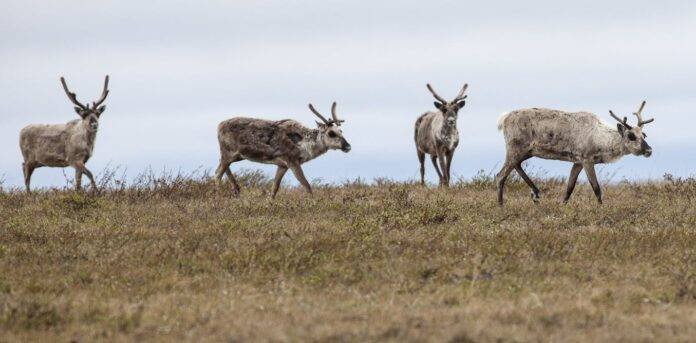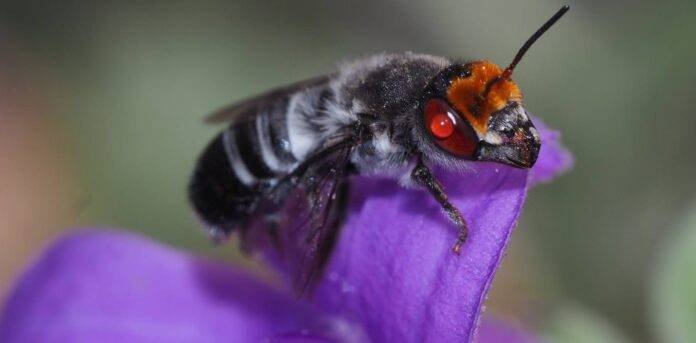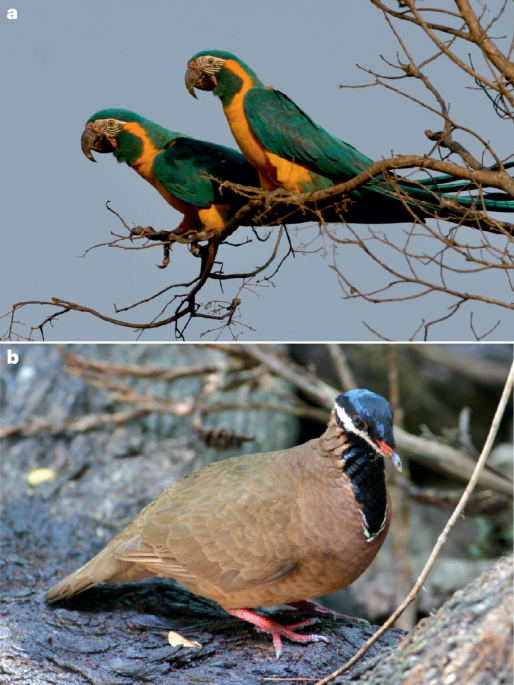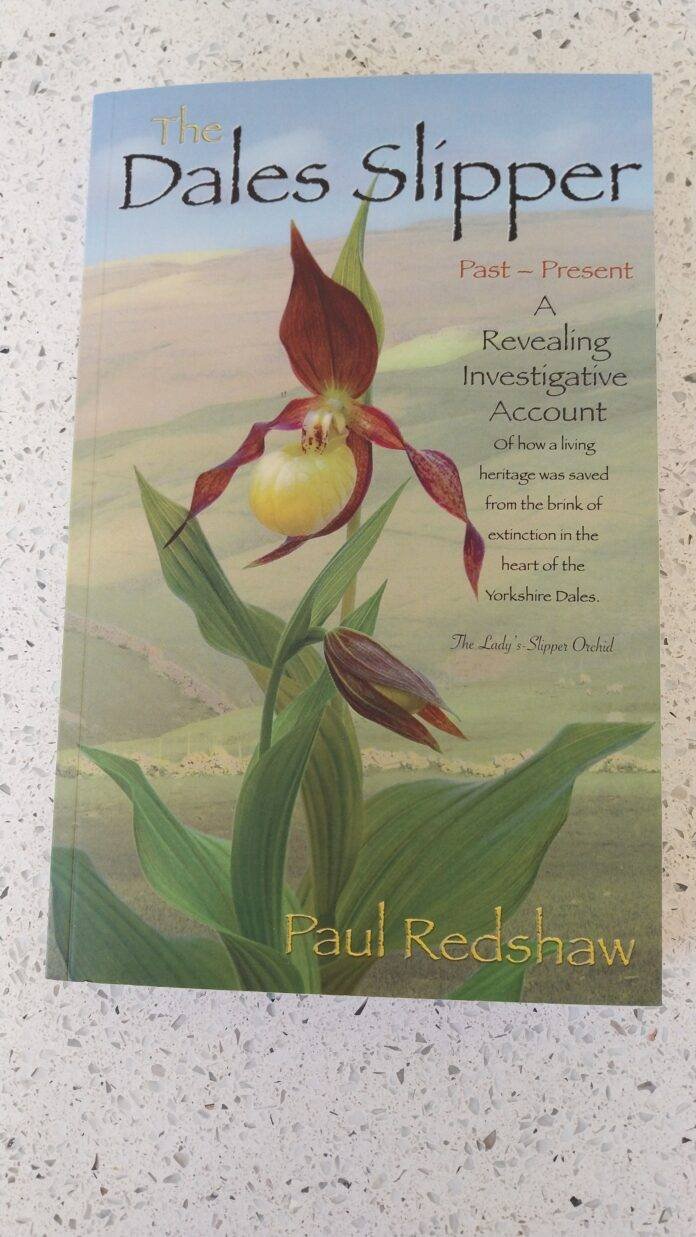Borah, R. et al. Genetic diversity and population structure assessment using molecular markers and SPAR approach in Illicium griffithii, a medicinally important endangered species of Northeast India. J. Genet. Eng. Biotechnol. 19, 118. https://doi.org/10.1186/s43141-021-00211-5 (2021).
Ved, D. K., Kinhal, G. A., Ravikumar, K., Sankar, R. V. & Haridasan, K. Conservation assessment and management prioritisation (CAMP) for wild medicinal plants of North-East India. (2005).
Borah, R., Malngiang, L., Upadhaya, K. & Choudhary, H. Seed dormancy, viability and germination of Illicium griffithii: A threatened medicinal plant of Northeast India. J. Saudi Soc. Agric. Sci. 23, 160–167. https://doi.org/10.1016/j.jssas.2023.10.005 (2024).
Vijayakumar, A. et al. Phytochemical analysis and in vitro antimicrobial activity of Illicium griffithii Hook. F. & Thoms extracts. Asian Pac. J. Trop. Dis. 2, 190–199. https://doi.org/10.1016/S2222-1808(12)60045-0 (2012).
Paul, A., Kalita, J., Khan, M. L. & Tripathi, O. P. Illicium griffithii Hook. f. & Thoms. A potential source of natural off-farm income to the rural people of Arunachal Himalaya, India. (2013).
Mukhia, P. K., Tangbi, S. D. & Tshering, K. D. Will the sale of Illicium griffithii reduce poverty in Aja Nye and Yabrang communities. A Ser. case Stud. Community based For. Nat. Resour. Manag. Bhutan Ed. by T Meyer, P Stephens HJJ Beukeboom (Pemaas Graph. Publ. Soc. For. Div. Dep. For. Minist. Agric. R. Gov 1–18 http://www.moa.gov.bt/downloads (2006).
Shang, J. et al. Environmental factors influencing potential distribution of Schisandra sphenanthera and its accumulation of medicinal components. Front. Plant. Sci. 14, 1302417. https://doi.org/10.3389/fpls.2023.1302417 (2023).
Shi, X. et al. Prediction of potentially suitable areas for the introduction of Magnolia wufengensis under climate change. Ecol. Indic. 127, 107762. https://doi.org/10.1016/j.ecolind.2021.107762 (2021).
Luo, J., Ma, Y., Liu, Y., Zhu, D. & Guo, X. Predicting Polygonum capitatum distribution in China across climate scenarios using maxent modeling. Sci. Rep. 14, 1–15. https://doi.org/10.1038/s41598-024-71104-z (2024).
Thampan, J., Srivastava, J., Saraf, P. N. & Samal, P. Habitat distribution modelling to identify areas of high conservation value under climate change for an endangered arid land tree Tecomella undulata. J. Arid Environ. 227, 105317. https://doi.org/10.1016/j.jaridenv.2025.105317 (2025).
Adeyemo, S. M. & Granger, J. J. Habitat suitability model and range shift analysis for American chestnut (Castanea dentata) in the united States. Trees, Forest and People 11, 100360. https://doi.org/10.1016/j.tfp.2022.100360 (2023).
Mammola, S. & Leroy, B. Applying species distribution models to caves and other subterranean habitats. 1194–1208 https://doi.org/10.1111/ecog.03464 (2018).
Kaky, E. & Gilbert, F. Using species distribution models to assess the importance of Egypt’s protected areas for the conservation of medicinal plants. J. Arid Environ. 135, 140–146. https://doi.org/10.1016/j.jaridenv.2016.09.001 (2016).
Kufa, C. A., Bekele, A. & Atickem, A. Impacts of climate change on predicted habitat suitability and distribution of Djaffa mountains Guereza (Colobus guereza gallarum, neumann 1902) using maxent algorithm in Eastern Ethiopian Highland. Glob Ecol. Conserv. 35, e02094. https://doi.org/10.1016/j.gecco.2022.e02094 (2022).
Padalia, H., Srivastava, V. & Kushwaha, S. P. S. Modeling potential Invasion range of alien Invasive species, Hyptis suaveolens (L.) poit. in India: comparison of maxent and GARP. Ecol. Inf. 22, 36–43. https://doi.org/10.2307/2344614 (2014).
Patni, B., Bhattacharyya, M., kumari, A. & purohit, V. K. Alarming influence of climate change and compromising quality of medicinal plants. Plant. Physiol. Rep. 27, 1–10. https://doi.org/10.1007/s40502-021-00616-x (2022).
Shen, T., Yu, H. & Wang, Y. Z. Assessing the impacts of climate change and habitat suitability on the distribution and quality of medicinal plant using multiple information integration: take Gentiana rigescens as an example. Ecol. Indic. 123, 107376. https://doi.org/10.1016/j.ecolind.2021.107376 (2021).
Forester, B. R., Dechaine, E. G. & Bunn, A. G. Integrating ensemble species distribution modelling and statistical phylogeography to inform projections of climate change impacts on species distributions. Divers. Distrib. 19, 1480–1495. https://doi.org/10.1111/ddi.12098 (2013).
Zhang, H. T. & Wang, W. T. Prediction of the potential distribution of the endangered species Meconopsis punicea Maxim under future climate change based on four species distribution models. Plants 12, https://doi.org/10.3390/plants12061376 (2023).
Koo, K. A. et al. Potential climate change effects on tree distributions in the Korean Peninsula: Understanding model & climate uncertainties. Ecol. Modell. 353, 17–27. https://doi.org/10.1016/j.ecolmodel.2016.10.007 (2017).
Wenger, S. J. et al. Probabilistic accounting of uncertainty in forecasts of species distributions under climate change. Glob Chang. Biol. 19, 3343–3354. https://doi.org/10.1111/gcb.12294 (2013).
Devi, V., Fulekar, M. H., Charles, B., Reddy, C. S. & Pathak, B. Predicting the habitat suitability and species richness of plants of great Himalayan National park under different climate change scenarios. Environ. Monit. Assess. 196, 1–14. https://doi.org/10.1007/s10661-024-13290-x (2024).
Hao, T., Elith, J., Guillera-Arroita, G. & Lahoz-Monfort, J. J. A review of evidence about use and performance of species distribution modelling ensembles like BIOMOD. Divers. Distrib. 25, 839–852. https://doi.org/10.1111/ddi.12892 (2019).
Kaky, E., Nolan, V., Alatawi, A. & Gilbert, F. A comparison between ensemble and maxent species distribution modelling approaches for conservation: A case study with Egyptian medicinal plants. Ecol. Inf. 60, 101150. https://doi.org/10.1016/j.ecoinf.2020.101150 (2020).
Hysen, L., Nayeri, D., Cushman, S. & Wan, H. Y. Background sampling for multi-scale ensemble habitat selection modeling: does the number of points matter? Ecol. Inf. 72, 101914. https://doi.org/10.1016/j.ecoinf.2022.101914 (2022).
Bhuyan, A. et al. Assessing current and future potential habitat of vatica lanceaefolia (Roxb.) Blume, a critically endangered tree species of Northeastern. Theo Appl. Climatol. 156, 1–13. https://doi.org/10.1007/s00704-025-05369-3 (2025).
Tiwary, R., Singh, P. P., Adhikari, D., Behera, M. D. & Barik, S. K. Vulnerability assessment of Taxus wallichiana in the Indian Himalayan region to future climate change using species niche models and global climate models under future climate scenarios. Biodivers. Conserv. 3475–3494. https://doi.org/10.1007/s10531-024-02859-0 (2024).
Abedin, I. et al. Distribution model reveals rapid decline in habitat extent for endangered hispid Hare: implications for wildlife management and conservation planning in future climate change scenarios. Biology (Basel) 13. https://doi.org/10.3390/biology13030198 (2024).
Myers, N., Mittermeier, R. A., Mittermeier, C. G., Fonseca, D. & Kent, J. Biodiversity hotspots for conservation priorities. Nature 403, 853–858. https://doi.org/10.1038/35002501 (2000).
Sharma, N. & Shukla, S. P. Geography and Development of Hill Areas: A Case Study of Arunachal Pradesh (Mittal, 1992).
Halder, S. et al. A review on diversity of floristic elements in the Indian state of Arunachal Pradesh. J. Bioresour. 1, 1–18. https://doi.org/10.5281/zenod0.12578344 (2024).
Chatterjee, S., Saikia, A., Dutta, P., Ghosh, D. & Worah, S. Review of biodiversity in Northeast India. Backgr. Pap. 13, (2006).
Maji, A. K. et al. Soil information system of Arunachal Pradesh in a GIS environment for land use planning. Int. J. Appl. Earth Obs. Geoinf. 3, 69–77. https://doi.org/10.1016/S0303-2434(01)85023-6 (2001).
Dhar, O. N. & Nandargi, S. Rainfall distribution over the Arunachal Pradesh Himalayas. Weather 59, 155–157. https://doi.org/10.1256/wea.87.03 (2004).
Webb, N. P. & Strong, C. L. Soil erodibility dynamics and its representation for wind erosion and dust emission models. Aeolian Res. 3, 165–179. https://doi.org/10.1016/j.aeolia.2011.03.002 (2011).
Tan, Z. X., Lal, R., Smeck, N. E. & Calhoun, F. G. Relationships between surface soil organic carbon pool and site variables. Geoderma 121, 187–195. https://doi.org/10.1016/j.geoderma.2003.11.003 (2004).
Aiello-Lammens, M. E., Boria, R. A., Radosavljevic, A., Vilela, B. & Anderson, R. P. SpThin: an R package for Spatial thinning of species occurrence records for use in ecological niche models. Ecogr. (Cop) 38, 541–545. https://doi.org/10.1111/ecog.01132 (2015).
Team, R. C. R: A Language and Environment for Statistical Computing (4.1. 1) (R Foundation for Statistical Computing, 2021).
Fick, S. E. & Hijmans, R. J. WorldClim 2: new 1-km Spatial resolution climate surfaces for global land areas. Int. J. Climatol. 37, 4302–4315. https://doi.org/10.1002/joc.5086 (2017).
Mukherjee, T. et al. Adaptive spatial planning of protected area network for conserving the Himalayan brown bear. Sci. Total Environ. 754, 142416. https://doi.org/10.1016/j.scitotenv.2020.142416 (2021).
Poggio, L. et al. SoilGrids 2.0: producing soil information for the Globe with quantified spatial uncertainty. Soil 7, 217–240. https://doi.org/10.5194/soil-7-217-2021 (2021).
Abedin, I. et al. Fragile futures: evaluating habitat and climate change response of hog badgers (Mustelidae: Arctonyx) in the conservation landscape of Mainland Asia. Ecol. Evol. 14, 1–20. https://doi.org/10.1002/ece3.70160 (2024).
Guisan, A., Thuiller, W. & Zimmermann, N. E. Habitat Suitability and Distribution Models: With Applications in R (Cambridge University Press, 2017).
Zurell, D. et al. Testing species assemblage predictions from stacked and joint species distribution models. J. Biogeogr. 47, 101–113. https://doi.org/10.1111/jbi.13608 (2020).
Dormann, C. F. et al. Collinearity: a review of methods to deal with it and a simulation study evaluating their performance. Ecogr. (Cop) 36, 27–46. https://doi.org/10.1111/j.1600-0587.2012.07348.x (2013).
De Marco, P. & Nóbrega, C. C. Evaluating collinearity effects on species distribution models: an approach based on virtual species simulation. PLoS One 13, e0202403. https://doi.org/10.1371/journal.pone.0202403 (2018).
Schmitt, S., Pouteau, R., Justeau, D., De Boissieu, F. & Birnbaum, P. Ssdm: an R package to predict distribution of species richness and composition based on stacked species distribution models. Methods Ecol. Evol. 8, 1795–1803. https://doi.org/10.1111/2041-210X.12841 (2017).
Meller, L. et al. Ensemble distribution models in conservation prioritization: from consensus predictions to consensus reserve networks. Divers. Distrib. 20, 309–321. https://doi.org/10.1111/ddi.12162 (2014).
Nelder, J. A. & Wedderburn, R. W. M. Generalized linear models. J. R Stat. Soc. Ser. Stat. Soc. 135, 370–384 (1972).
Friedman, J. H. Multivariate adaptive regression splines. Ann. Stat. 19, 1–67. https://doi.org/10.1214/aos/1176347963 (1991).
Phillips, S. J., Dudík, M. & Schapire, R. E. A maximum entropy approach to species distribution modeling. in Proceedings of the twenty-first international conference on Machine learning 83 https://doi.org/10.1145/1015330.1015412 (2004).
Shaik, A. B. & Srinivasan, S. A brief survey on random forest ensembles in classification model. in International Conference on Innovative Computing and Communications: Proceedings of ICICC 2018, 2 253–260 https://doi.org/10.1007/978-981-13-2354-6_27 (Springer, 2019).
Hearst, M. A., Dumais, S. T., Osuna, E., Platt, J. & Scholkopf, B. Support vector machines. IEEE Intell. Syst. Their Appl. 13, 18–28. https://doi.org/10.1109/5254.708428 (1998).
Johnson, S. E., Delmore, K. E., Brown, K. A., Wyman, T. M. & Louis, E. E. Niche divergence in a brown lemur (Eulemur spp.) hybrid zone: using ecological niche models to test models of stability. Int. J. Primatol. 37, 69–88. https://doi.org/10.1007/s10764-015-9872-y (2016).
Kamilar, J. M. & Tecot, S. R. Anthropogenic and climatic effects on the distribution of Eulemur species: an ecological niche modeling approach. Int. J. Primatol. 37, 47–68. https://doi.org/10.1007/s10764-015-9875-8 (2016).
Kundu, S. et al. Matrilineal phylogeny and habitat suitability of the endangered spotted pond turtle (Geoclemys hamiltonii; testudines: Geoemydidae): a two-dimensional approach to forecasting future conservation consequences. PeerJ 11, e15975. https://doi.org/10.7717/peerj.15975 (2023).
Changjun, G. et al. Predicting the potential global distribution of Ageratina adenophora under current and future climate change scenarios. Ecol. Evol. 11, 12092–12113. https://doi.org/10.1002/ece3.7974 (2021).
Lin, Y. P. et al. Assessing uncertainty and performance of ensemble conservation planning strategies. Landsc. Urban Plan. 169, 57–69. https://doi.org/10.1016/j.landurbplan.2017.08.007 (2018).
Rew, J., Cho, Y., Moon, J. & Hwang, E. Habitat suitability estimation using a two-stage ensemble approach. Remote Sens. 12, 1475. https://doi.org/10.3390/RS12091475 (2020).
Allouche, O., Tsoar, A. & Kadmon, R. Assessing the accuracy of species distribution models: prevalence, kappa and the true skill statistic (TSS). J. Appl. Ecol. 43, 1223–1232. https://doi.org/10.1111/j.1365-2664.2006.01214.x (2006).
Jung, J., Bin, Park, G. E., Kim, H. J., Huh, J. H. & Um, Y. Predicting the habitat suitability for Angelica gigas medicinal herb using an ensemble species distribution model. Forests 14, 592. https://doi.org/10.3390/f14030592 (2023).
Zenebe, G., Zenebe, A., Birhane, E., Girma, A. & Shiferaw, H. Revealing suitable habitats for Juniperus procera and Olea europaea tree species in the remnant dry Afromontane forests of Ethiopia: insights from ensemble species distribution modeling approach. Ecol. Evol. 14, e70343. https://doi.org/10.1002/ece3.70343 (2024).
Lee, D. S., Choi, W., Il, Nam, Y. & Park, Y. S. Predicting potential occurrence of pine wilt disease based on environmental factors in South Korea using machine learning algorithms. Ecol. Inf. 64, 101378. https://doi.org/10.1016/j.ecoinf.2021.101378 (2021).
Bedair, H., Shaltout, K. & Halmy, M. W. A. Stacked machine learning models for predicting species richness and endemism for mediterranean endemic plants in the mareotis subsector in Egypt. Plant. Ecol. 224, 1113–1126. https://doi.org/10.1007/s11258-023-01366-6 (2023).
Xue, J. et al. Transmission risk predicting for schistosomiasis in Mainland China by exploring ensemble ecological niche modeling. Trop. Med. Infect. Dis. 8, 24. https://doi.org/10.3390/tropicalmed8010024 (2022).
Powell-Romero, F., Fountain‐Jones, N. M., Norberg, A. & Clark, N. J. Improving the predictability and interpretability of co‐occurrence modelling through feature‐based joint species distribution ensembles. Methods Ecol. Evol. 14, 146–161. https://doi.org/10.1111/2041-210X.13915 (2023).
Amiri, M., Tarkesh, M., Jafari, R. & Jetschke, G. Bioclimatic variables from precipitation and temperature records vs. remote sensing-based bioclimatic variables: which side can perform better in species distribution modeling? Ecol. Inf. 57, 101060. https://doi.org/10.1016/j.ecoinf.2020.101060 (2020).
Zhong, Y. et al. Shrinking habitats and native species loss under climate change: A multifactorial risk assessment of China’s inland wetlands. Earth’s Futur. 10, eEF002630 https://doi.org/10.1029/2021EF002630 (2021).
Chang, B. et al. Predicting the potential distribution of Taxus cuspidata in Northeastern China based on the ensemble model. Ecosphere 15, e4965. https://doi.org/10.1002/ecs2.4965 (2024).
Dakhil, M. A., El-Barougy, R. F., El-Keblawy, A. & Farahat, E. A. Clay and climatic variability explain the global potential distribution of Juniperus phoenicea toward restoration planning. Sci. Rep. 12, 13199. https://doi.org/10.1038/s41598-022-16046-0 (2022).
Guo, C. et al. Uncertainty in ensemble modelling of large-scale species distribution: effects from species characteristics and model techniques. Ecol. Modell. 306, 67–75. https://doi.org/10.1016/j.ecolmodel.2014.08.002 (2015).
Crimmins, S. M., Dobrowski, S. Z. & Mynsberge, A. R. Evaluating ensemble forecasts of plant species distributions under climate change. Ecol. Modell. 266, 126–130. https://doi.org/10.1016/j.ecolmodel.2013.07.006 (2013).
Duchok, R., Kent, K., Khumbongmayum, A. D., Paul, A. & Khan, M. L. Population structure and regeneration status of medicinal tree Illicium griffithii in relation to disturbance gradients in temperate broad-leaved forest of Arunachal Pradesh. Curr. Sci. 673–676 https://www.jstor.org/stable/24111166 (2005).
Angami, T. et al. Star Anise (Illicium griffithii Hook. F. and Thoms.): a tree spice from high altitude region of Arunachal Pradesh. New. Visions Biol. Sci. 2, 123–129. https://doi.org/10.9734/bpi/nvbs/v2/4128f (2021).
Saha, D. & Sundriyal, R. C. Perspectives of tribal communities on NTFP resource use in a global hotspot: implications for adaptive management. Perspect. (Montclair) 3, http://www.iiste.org (2013).
Bapu, T. D. & Nimasow, G. An assessment of the population status of the threatened medicinal plant Illicium griffithii Hook. F. & Thomson in West Kameng district of Arunachal Pradesh, India. J. Threat. Taxa 13, 17504–17512. https://doi.org/10.11609/jott.6082.13.1.17504-17512 (2021).






